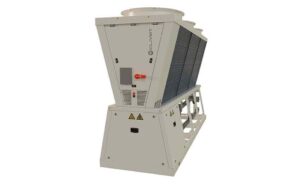Snow cooling created greater emissions
23rd December 2013 JAPAN: An experiment to ship snow from the north of Japan to help reduce the air conditioning load in Tokyo has created CO2 emissions three times greater than the emissions reduction achieved.
JAPAN: An experiment to ship snow from the north of Japan to help reduce the air conditioning load in Tokyo has created CO2 emissions three times greater than the emissions reduction achieved.
The experiment begun in 2012 involved transporting snow over 1,000 miles from the frozen northern city of Hokkaido to use in ice storage systems in Tokyo to reduce the air conditioning cooling load on buildings.
According to Japanese newspaper The Yomiuri Shimbun, the Japanese Environment Ministry believed the system would be able to cut CO2 emissions from air conditioning by 30%.
As part of the ¥370m (£2.17m) trial, a snow air conditioning system was used at the Imperial Hotel in Tokyo for a month in September 2012, between 13.00hr and 16.00. The snow used for the system was brought all the way from Hokkaido, which is about 1,230km from Tokyo, almost daily. It took about 1½ days for trucks and trains to carry about four tons of snow.
According to the Yomiuri Shimbun, ministry figures reveal that transporting the snow such a long distance produced about 120kg of CO2 emissions, while the amount of emissions cut by the snow air condition was only about 40kg per day.
The Environment Ministry has since shifted the source of snow to Kai, Yamanashi Prefecture, which is about 190km from Tokyo. The results of that trial have not yet been released.
Japan is just one of a number of countries including Sweden, Canada and Russia with access to abundant supplies of snow looking to tap into its environmental cooling benefits.
In Stockholm alone during a normal winter it is estimated that about a 1,000,000m³ of cleared snow is dumped in the city’s waterways. In St Petersburg the figure is as high as 25,000,000m³. Not surprisingly, both cities are looking into ways they can use snow for district cooling.







